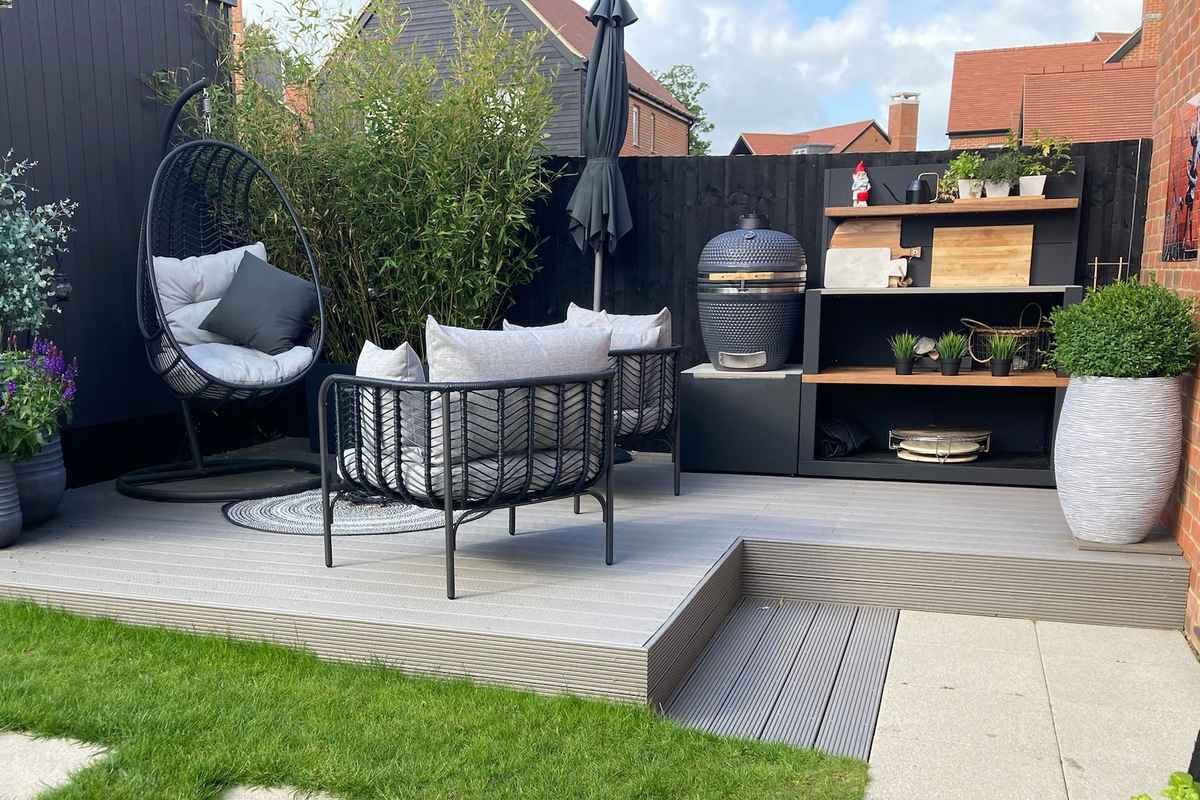The district of Georgetown boasts rows of tightly packed townhouses lining narrow streets, with hidden pockets of green tranquility. When garden designer William Morrow embarked on crafting his enclosed backyard five years ago, he naturally leaned toward an Old-World aesthetic.
Yet, the available space, measuring 1,686 square feet, was anything but expansive. As such, he adapted his vision accordingly.
The construction process posed challenges, but as Morrow elaborates, his method simplifies into straightforward phases which consist of the following:
Begin Work on Your House
Morrow’s initial objective involved crafting a space for outdoor gatherings adjacent to the house. However, he aimed to avoid allowing the existing architecture to dictate his design. Despite its charming street view, his 1890s Victorian home had a rather unadorned rear facade.
To address this, Morrow opted to shroud it in wisteria. This leafy backdrop, resembling a theatrical set, harmonizes perfectly with the wrought-iron furniture and weathered stone on the patio.
Prioritize Adaptability
Given the ever-changing array of perennials in Morrow’s garden, a potential distraction had to be managed. His solution involved formulating a layout that featured a well-defined hardscape of stone and gravel, complemented by a core of perennial plants that provided year-round visual interest.
Remove the Walls
Morrow uncovered a clever technique to create a sense of spaciousness within the confined area – the “vanishing boundary.”
Three sides of the garden were enclosed by tall wooden board fences, each standing at 7 feet. To make these barriers recede into the background, he coated them with a high-gloss black finish.
Despite initial skepticism, visitors to the garden quickly understood the effectiveness of this approach.
Embrace Decisiveness
Morrow believes that the resources required to maintain a lawn could be better invested in cultivating a lush perennial bed or an imaginative Edward Scissorhands-style topiary garden.
Right Tree, Right Spot
Morrow candidly admits that he had to bid farewell to three imposing Magnolia grandiflora trees. He acknowledges that these trees were poorly placed to begin with. While Southern magnolias possess charm from a distance, they aren’t ideal for living beneath.
Instead, he chose to retain a fourth tree positioned at a more suitable distance from the house, allowing its integration into the design.
Incorporate Décors
Following the demanding yet essential restructuring, Morrow turned his focus to furnishings. He explained that iron furniture suits small gardens well due to its visual lightness and airiness.
Infuse Diversity
Seasonal containers play a pivotal role in this garden’s composition. Morrow employs individual specimen plants in smaller pots (less than 18 inches in diameter), and in larger containers, he combines vibrant assortments of annuals and summer exotics such as bananas, palms, agaves, and coleus. During winter, evergreen shrubs assume control of these planters.

